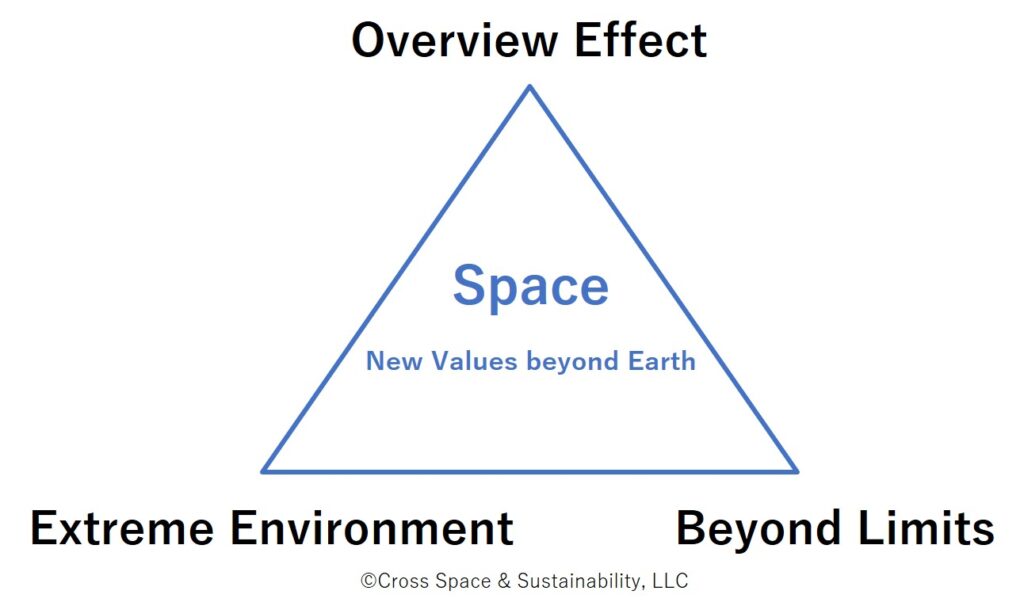SDGs (Sustainable Development Goals) were adopted by the United Nations General Assembly in 2015 as universal objectives for humanity on Earth. How does Space contribute to the achievement of these SDGs? In space, there are three new values not present on Earth, and they give rise to innovative solutions that can address challenges on the ground.

1.Overview Effect
Going out into Space and looking at the Earth from the outside has allowed humanity to gain a new perspective. The Earth's global photograph taken by the Apollo 17 astronauts in 1972 has been used in many environmental protection movements, revealing the beauty of Earth as well as the fragility of its environment with the thinness of the atmosphere which is just about 100 km above the surface. Various solutions, such as technology for comprehensive monitoring of the Earth's environment from Space and the capability to measure and manage activities on the ground from Space, have emerged as a result.
2.Extreme Environment
If one goes into Space, it is possible to obtain environments that are either unattainable or extremely challenging on Earth. For instance, the microgravity utilized in life sciences and material development on the International Space Station (ISS) cannot be consistently replicated on the ground. Moreover, conditions prevalent in space, such as high vacuum and extreme low temperatures, are beneficial for semiconductor development, but obtaining these continuously on Earth is quite challenging.
In the context of lunar and Mars habitation, the high cost of transportation from Earth makes it imperative to adopt resource self-sufficiency, where locally sourced materials are utilized, and imported supplies undergo thorough recycling in an energy-efficient circular system. Such solutions are expected to contribute to the establishment of a Circular Economy on Earth, promoting a sustainable and recycling-oriented society.
3.Beyond Limits
In space, there are no constraints imposed by elements such as gravity and atmosphere, which we commonly perceive as part of our everyday understanding. For instance, terrestrial solar power generation is restricted by weather conditions and nighttime. However, by coordinating multiple solar power satellites in space above the clouds and wirelessly transmitting power to the ground, it becomes feasible to generate power 24 hours a day. Moreover, in space, there are no borders, allowing for the creation of new frameworks for international cooperation and collaboration beyond national boundaries.
Contemplating space encourages us to think beyond the various limitations that bind us, urging us to consider Earth from a fresh perspective and to create solutions with innovative viewpoints.
